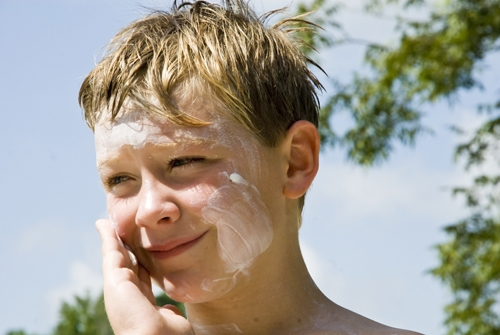
Schools should also be reminding students and parents of ‘no hat, only play in the shade’ rules, and the need to apply sunscreen at regular intervals.
Jane Armstrong, project coordinator for the Cancer Society’s SunSmart Schools Programme, says sunburn, particularly in childhood, increases the risk of melanoma later in life.
“It is estimated that the majority of a person’s lifetime ultra-violet radiation (UVR) exposure, up to 80 per cent, commonly occurs during childhood. Limiting UVR exposure during school years could reduce the incidence of skin cancers in later life.”
Schools can take a number of steps over the summer months to ensure their students are protected from the suns harsh rays and help limit student’s exposure to UVR.
“Make sure your students stay protected with sun-protective clothing, such as shirts with sleeves, wear hats not caps and provide SPF 30+ sunscreen so they don’t get sunburnt,” advises Armstrong.
“Ensure adequate shaded areas are provided for outdoor activities; educate students, staff and parents about the dangers of over-exposure to the sun’s UV rays and show them how to be sunsmart.”
Schools should plan ahead or reschedule outdoor activities so they are not held during the peak sun hours; and should make sure that if students must spend time outdoors they have sunscreen, a hat and try to seek shade between 11am-4pm.
Primary and intermediate schools across the country can also apply to become SunSmart Accredited Schools. This means that the school follows the Cancer Society’s criteria to protect staff and students from the sun’s UV rays. The criteria set out by the Cancer Society includes, introducing a sun-protection policy which is implemented during terms one and four, when ultraviolet radiation levels are most intense. All staff, students and parents/caregivers should then be made aware of the sun-protection policy and its intended practices and staff should be instrumental in acting as role models for students.
Armstrong advises that the policy stipulates that all students should wear broad brimmed (minimum 7.5cm brim), legionnaire or bucket hats (minimum 6cm brim, deep crown) when outside. Caps are not acceptable, she says, as they do not fully protect the face, ears and neck. Students not wearing a hat should be required to play in allocated shade areas.
Schools should also encourage the use of broad-spectrum SPF 30+ sunscreen and the use of sun-protective clothing. SunSmart education programmes should also be included in the curriculum at all levels every year. These resources are available to download from the SunSmart schools website.
The sun-protection policy must be reflected in the planning of all outdoor events, such as camps, excursions, sporting events. Schools must review their sun-protection policy at least every three years. This should include improving sunsmart practices where necessary.
On top of this, says Armstrong, schools can drive the message home for parents and caregivers by including frequent messages about how to be sunsmart in the school newsletter. “And promote being sunsmart positively by doing things such as giving out certificates to students for being sunsmart,” she says.
The much-delayed English draft curriculum is now out for consultation, generating discussion from teachers.
Research from AUT demonstrates arts, culture and recreation have positive impacts on all aspects of…
How effective has the school phone ban been in achieving its aims? Researchers from the…
School camps and excursions deliver hands on learning experiences, helping to consolidate classroom learning.
Innovations in AV technologies present new opportunities to engage with students. We look at how…
A new report from the University of Auckland’s Our Voices Project asks young people what…
This website uses cookies.